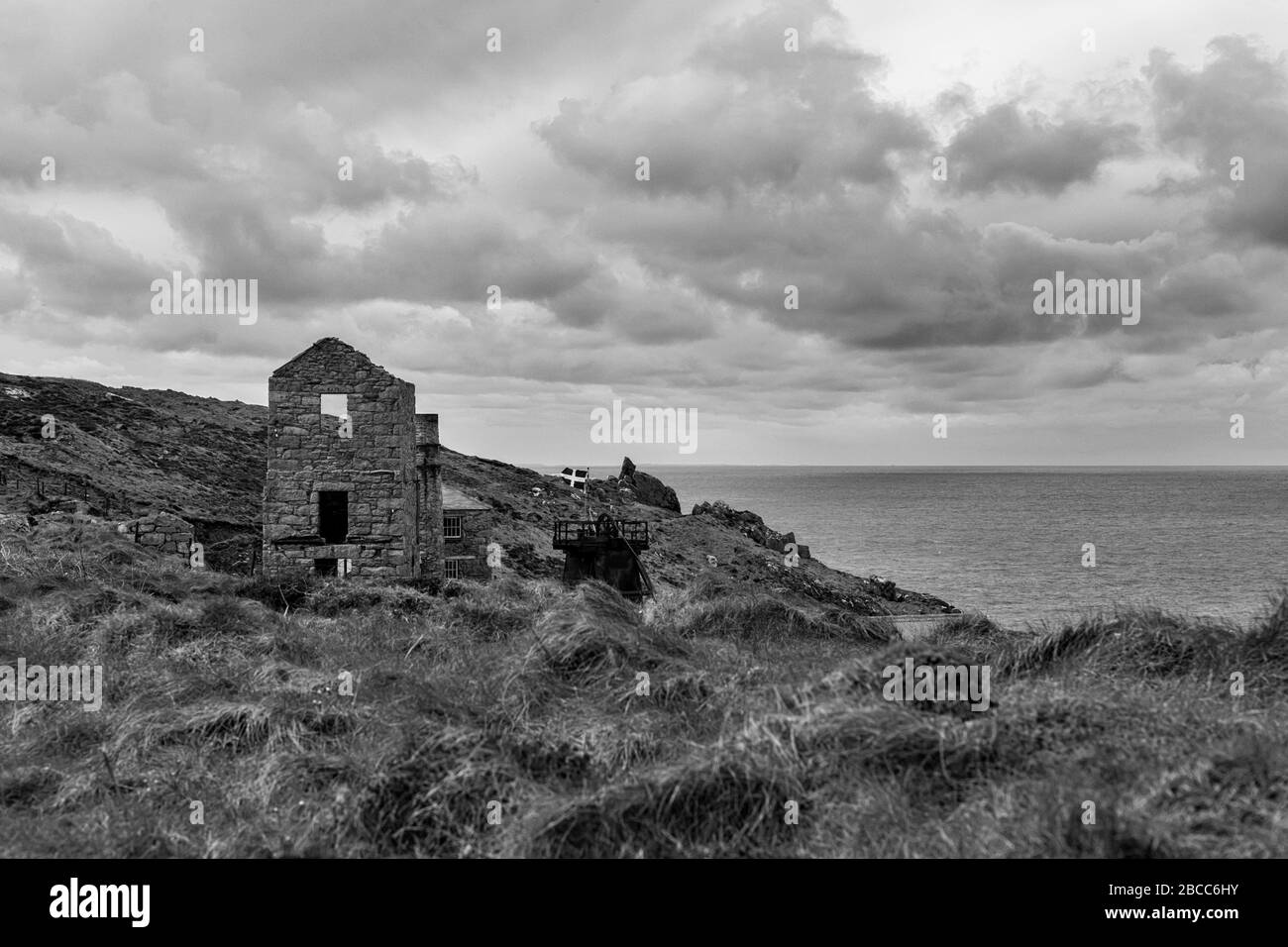Ruins of the pump engine house, Levant Mine, UNESCO World Heritage Site, Penwith Peninsula, Cornwall, UK. Black and white version

Image details
Contributor:
will Perrett / Alamy Stock PhotoImage ID:
2BCC6HYFile size:
50 MB (1.7 MB Compressed download)Releases:
Model - no | Property - noDo I need a release?Dimensions:
5120 x 3413 px | 43.3 x 28.9 cm | 17.1 x 11.4 inches | 300dpiDate taken:
4 April 2019Location:
Levant Mine, St. Just, Penwith, Cornwall, England, UKMore information:
Levant Mine is located within the St Just Mining District; one of the most ancient hard-rock tin and copper mining areas in Cornwall. Copper and tin have been mined here for generations, and the mine workings of Levant extend over a mile out under the sea bed. In 1820, the Levant Mining Company was formed and by 1836, 320 men, 44 women and 186 children were employed on the site. In Levant's first 20 years of business, £170, 000 was made from mining copper. New technology was introduced to streamline production, and in 1857 the now-infamous man engine was installed. This engine carried men many fathoms up and down the mine, to and from work each day. In 1919, the man engine suffered a disastrous failure when a link between the rod and the engine snapped, killing 31 men and injuring many more. Levant never recovered, experiencing a steady decline and in 1930 the mine closed. The mine produced copper: the original focus of Levant's mining industry; tin: there are two tin-dressing floors at the mine: arsenic: a lucrative but deadly by-product of tin ore